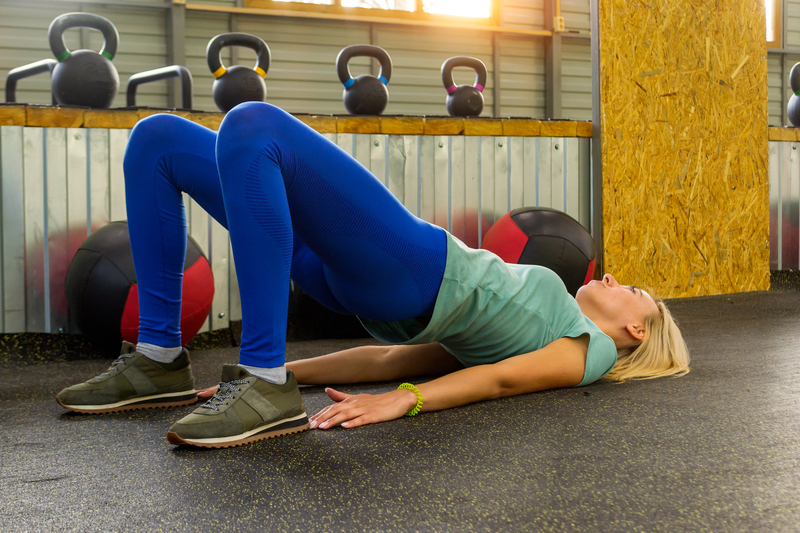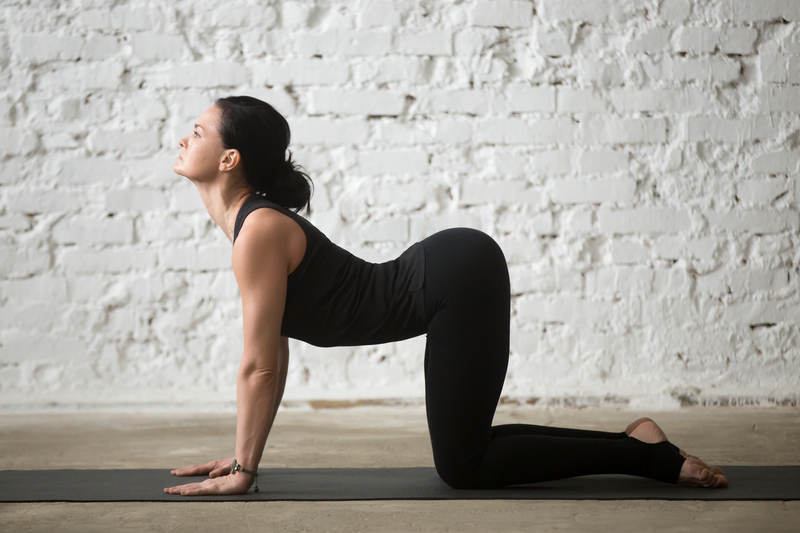6 Exercises to Strengthen Your Lower Back Safely

We all need to be doing exercises to strengthen the lower back, but it may not be clear what you need to do or why. Doing lower back exercises is a great start, but are you doing the right exercises, the right way? There is some strategy involved when it comes to training lower back, and heavier is not always better.
What it boils down to is that you don’t want your lower back to be the primary mover (meaning it powers you through the movements). Instead, you want the primary use of your lower back to be as a stabilizer. So, think of the muscles near your lower back (like glutes and hips) as being the powerhouses that do the work of moving while your lower back’s job is to keep things stable and safe. Keeping that lower back tight and in a neutral position allows the big muscles to be the primary movers.
What Causes Back Pain?
When you use your lower back as the primary mover and round or twist your back during weighted movements, you can put significant pressure on your discs. This results in back pain and even injury over time. And that can put the brakes on a lot of activities. Try to avoid the things that are harmful for your lower back health, including:
- Bad posture—yep, you’ve heard it before. Stand up straight and don’t hunch or round your shoulders forward.
- Excessive sitting—we all do it, especially if we travel for work or work a desk job. Remember to notice how you’re sitting and fix your posture, and get up and walk around or stretch every 30 minutes or so if possible.
- Bad technique when lifting—if you don’t bend at the knees and keep your lower back out of the equation when lifting, you’ll have a recipe for disaster on your hands.
What to Avoid if You Already Have Back Pain?
Many exercises are neither all bad, nor all good. Form, of course, is important. But there are also exercises that can aggravate back pain, such as:
- Leg lifts, while not necessarily “bad” when done properly, are almost a catch 22 because you kind of need a strong core to do these without using too much assistance from the hip flexors and arching your back. If you do decide to move forward with these, make sure you keep your lower back pushed into the floor when you do them.
- Overarching your back during movements versus keeping it in a straight, tightly controlled line.
- Sit-ups done with momentum, wreaking havoc on your spine.
- Toe Touches with a rounded back instead of bending forward at the hips.
- Twisting and Turning motions with weight, placing the burden on your weaker lower back and not on the stronger muscles of the posterior chain.
6 Exercises to Strengthen Your Lower Back Safely
Use exercises that will stabilize your lower back by using the hips for flexion and extension. It’s also important to strengthen your glutes so they can be the main muscle movers during heavy lifting and your back can stay in the background as the main stabilizer. Developing a strong posterior chain (back, glutes, hamstrings) will help you improve your fitness and mobility as they will work together to safely provide you with power and movement. Try adding these lower back exercises to your regimen to improve strength and stability.
1. Bridges

These help with the lower back and glutes. Lie on your back with your knees bent and feet flat on the floor with your ankles directly below your knees. With straight arms, place your hands, palms down, next to your hips. Next, take in a deep breath and then blow it out while raising your hips up as you push your feet into the ground. Press the hips up toward the sky. Hold this position and squeeze the glutes before returning to the start. Remember to keep your back straight (i.e., don’t go past a straight line with your body).
2. Single-Leg Bridges

This is the same as above except you’ll keep one leg on the ground and lift the other leg as you perform the bridge movement. Do 5 – 10 repetitions on one side and then switch to the opposite side.
3. Hollow Body Crunch

Start on your back with your knees bent and your feet flat on the floor. Keeping the knees bent, lift your legs off the floor and bring your knees toward your chest. Raise your shoulder blades off the ground while keeping your lower back pressed into the floor. Do a set of 15 – 20 crunches while in this position, bringing your head and shoulders toward your knees.
4. Swimmers
These are a great lower back exercise as well. Adapted from the “Superman” exercise that has you lift all four extremities simultaneously, the swimmers have you lift opposing sides. Start on your belly with arms above your head and legs out straight behind you. At the same time, lift your right arm and left leg off the ground and hold the squeeze for a count of three. Then, switch to the opposite side and lift your left arm and right leg holding the squeeze for a count of three. Repeat 10 times for each side to complete one round.
5. Cat-Cow

In this spinal flexion and extension exercise, lower back muscles are activated but without strain or pressure on your spine. Simply start on your hands and knees, head up a back neutral. Bring your head up and press your stomach and lower spine toward the floor (figuratively speaking). Next, go in the opposite direction by hunching your back (like a cat) and dropping your head down between your shoulders. Do this movement back and forth for about 10 repetitions in each direction to complete one set.
6. Deadlift

You can do these with just bodyweight, small dumbbells, a barbell, or even a band. Stand with your feet wider than hip-width apart. Your arms should be hanging straight down at your sides. If using weight, grab the weight in each hand, and bend forward slowly from the waist. Your head should remain upright and your back straight. Your butt and hips will naturally move back as you bend at the knees and bring your torso forward. Once you have squatted down enough that your thighs are about parallel with the floor, straighten your knees, and move your hips forward to return to the standing position.
The bottom line when it comes to keeping your lower back healthy and strong is to protect it by using proper form, engaging the right muscles to do the heavy lifting, and consistently doing your lower back strengthening exercises. Don’t do things if they hurt it, and always remember, the lower back is a stabilizer, not a mover.




 7 Signs Your Body is Seriously Low on Collagen (not just wrinkles)
7 Signs Your Body is Seriously Low on Collagen (not just wrinkles) Health Expert: "Turmeric Doesn't Work (unless...)"
Health Expert: "Turmeric Doesn't Work (unless...)" 3 Warning Signs Your Probiotic Supplement is a Total Waste
3 Warning Signs Your Probiotic Supplement is a Total Waste

